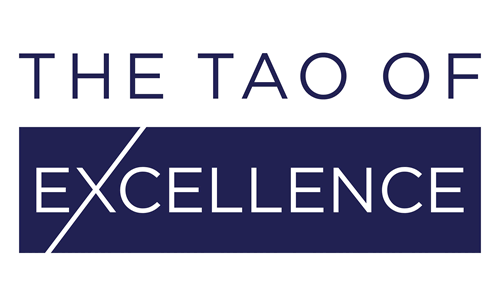Next week, it will be exactly 1 year until the EU Commission’s (EC) new Medical Device Regulations (MDR) become applicable. First published in May 2017 and in action from the 26 May 2020, the MDR is now two-thirds of the way through its implementation plan to modernise the medical devices industry and make it more transparent and safer for patients.
Over the past two years the EU MDR has presented a series of significant changes to the medical devices industry’s regulatory framework, including the re-certification of Notified Bodies, the proposed EU Databank on (UDI) and the redefinition of clinical data and Quality Management Systems (QMS) as a regulatory requirement for certification.
Most recently, April saw two of the industry’s most central concerns come into focus:
- will Notified Bodies be designated in time and have the capacity to certify products for the EU market within the MDR timeline;
- and will the EUDAMED—the database that translates the very spirit of the MDR into facts and figures—be ready to launch on time in March 2020.
Notified Bodies
Currently, the UK based company BSI is just 1 of 58 NBs designated to assess and certify products for the EU market. In addition to this, a NB typically takes 3–9 months to re-certify a product, a timeline that is likely to increase given the new regulatory requirements and there is now just 12 months until the MDR becomes applicable.[1]
Whilst the MDR designated NB BSI currently certifies as much as 40% of medical devices in Europe, it is located in a country that is exiting the EU—effectively making its certification invalid in the event of Brexit. To mitigate against these circumstances, BSI has opened an office in the Netherlands and applied for MDR designation so that it can operate in Europe, yet, as with the other NBs in the region, they are still waiting for that status.
Additionally, whilst BSI has been able to offer an internal transfer of MDD certificates to their Netherlands office for their current clients, as well as advised manufactures to contact designated NBs in Europe, the demand for designated NBs still massively outweighs the supply.
On top of the manufacturers waiting for their NB to be designated, the new MDR requirements mean that there are also tens of thousands of devices that will now require a NB assessment for the first time. In order to meet the need for NBs to increase their capacity, The European Association Medical Devices – Notified Bodies (Team-NB) released a statement at the end of February to illustrate their continued recruiting efforts and intention to employ a further 29% of staff in 2019.[2]
Writing for the Medical Device and Diagnostic Industry (MD+DI), Paul Brooks reports there are currently “2,000 pharma companies and 27,000 medtech companies operating in Europe, employing a total of more than 1.4 million people in the region.” Europe also accounts for around 29% of the global medtech market, making it “easily the second largest market in the world for these vital healthcare products after the United States,” and “worth more than €300 billion (nearly $350 billion).”[3]
In an open letter to Mr Jyrki Katainen, Vice-President for Jobs, Growth, Investment and Competitiveness at the European Commission, Serge Bernasconi, Chief Executive Officer of MedTech Europe, voiced the industry’s growing concern in the designation of NBs and their capacity to certify products within the MDR timeline. Writing that, “without immediate action by the European Commission, the new regulatory system will not be ready on time to ensure continued access of patients and healthcare systems to life-saving and life-transforming devices.”[4]
The industry’s rising concern—and particularly how the lack of access to designated NBs will affect small and medium-sized enterprises (SMEs) the most—is a clear indication of “how important the healthcare products sector is to Europe and how important Europe is to the global healthcare products sector.”[5] As Bernasconi confirms, European start-ups and SMEs represent “95% of the medical device industry,” and they “are already turning to the United States, China and other regions to develop and roll-out their innovations and bring their related economic activity outside of Europe.”[6]
EUDAMED
The European Medical Devices Coordination Group (MDCG) has now published the much awaited functional specifications, the clarity on the medical device nomenclature as well as two guidance documents on the registration of the devices for EUDAMED; the Timelines for registration of device data elements in EUDAMED and the Registration of legacy devices in EUDAMED, giving manufacturers the information they need to plan and upload their data accordingly. The functional specifications highlight how the database will be built and provide more clarity on public and restricted information.
The EC has also confirmed the use of a National Classification of Medical Devices (CND) nomenclature mapped to the Global Medical Device nomenclature. “The correspondence between the nomenclatures will be visible to operators and incorporated in the future database. This will allow all operators registering their device to find CND nomenclature equivalent to a GMDN code,” the EC has said, a connection that is designed to provide “better regulatory oversight.”[7]
However, it remains unlikely that the database will be fully operational by March 2020. In fact, the EC has already communicated that the clinical investigation and market surveillance modules will be delayed due to technical glitches. The timeline for user guides, training material and the platform for user training however is still scheduled for release before March 2020. Yet, delays there will put manufacturers in a very high-pressure situation of trying to upload their data to EUDAMED last minute in order to keep in track with their product registration schedules.
Switzerland’s MRA
Adding to industry concern and uncertainty is the unique position Switzerland holds within the single market. In a letter to manufactures in April, Swiss Medtech confirmed that, “Barrier-free access to the EU single market can only be achieved by updating the Mutual Recognition Agreement (MRA).”[8]
As this update is “not assured at present”, manufactures based in Switzerland face losing their free access to the EU market if the MRA is not signed. This may mean that Switzerland will need to comply with “third-country requirements” outlined in article 11 and 12 of the MDR. This would require:
- working with an Authorised Representative (AR) with a domicile in the EU area;
- supplementing the product labelling with the authorised representative and importer.
Swiss Medtech has noted that, depending on the complexity of the portfolio, “meeting these two requirements can take up to two years.” It will take time for companies to find the right AR for their business, ensure they have a certified QMS, and draw up a mandate with the AR to ensure they have the capability to understand the documentation, labelling requirements and packaging requirements.
What you can do
In the face of uncertainty, it is important to focus on what you do know and can do; reinforce your plan with the information that you do you have, identify the areas where you may need more information and support and then strategize your plans accordingly. With the right support, a year is still a significant amount of time to prepare for the MDR. Manufacturers should therefore plan to accommodate these hurdles and changes in their own MDR project plan, reworking their strategies as required.
The Tao of Excellence has expert knowledge in the MDR’s regulatory framework and implementation timeline. Contact us today for your consultation or visit our website for more information on our services to find out how we can support and optimise your MDR project.
 Deepa Rajagopalan
Deepa Rajagopalan
Phone
+41 52 685 51 65
Email
meetus@taoexcellence.ch
Did you like this article? Follow us on LinkedIn and Twitter!
[1] Serge Bernasconi, Open letter on the implementation and readiness status of the new Medical Device Regulation 745/2017 (MDR), 15 April 2019: https://www.medtecheurope.org/wp-content/uploads/2019/04/MedTech-Europe_VP-Katainen_MDR-implementation-status_15-April-2019.pdf
[2] Françoise Schlemmer, Team-NB member capacity, 28 February 2018: http://www.team-nb.org/wp-content/uploads/2019/03/Team-NB-Press-Release-Survey-Capacities-February-20190228-1.pdf
[3] Paul Brooks, Medical Device and Diagnostic Industry (MD+DI), 1 May 2019: https://www.mddionline.com/widespread-concern-over-europes-uncertain-regulatory-future-highlights-regions-importance
[4] Serge Bernasconi, Open letter on the implementation and readiness status of the new Medical Device Regulation 745/2017 (MDR), 15 April 2019: https://www.medtecheurope.org/wp-content/uploads/2019/04/MedTech-Europe_VP-Katainen_MDR-implementation-status_15-April-2019.pdf
[5] Paul Brooks, Medical Device and Diagnostic Industry (MD+DI), 1 May 2019: https://www.mddionline.com/widespread-concern-over-europes-uncertain-regulatory-future-highlights-regions-importance
[6] Serge Bernasconi, Open letter on the implementation and readiness status of the new Medical Device Regulation 745/2017 (MDR), 15 April 2019: https://www.medtecheurope.org/wp-content/uploads/2019/04/MedTech-Europe_VP-Katainen_MDR-implementation-status_15-April-2019.pdf
[7] EU Commission, Medical Devices Nomenclature, 7 March 2019, https://ec.europa.eu/docsroom/documents/34264
[8] Swiss Medtech, Recommendation to all Swiss manufacturers of medical devices, 25 April 2019: https://docs.wixstatic.com/ugd/3f5239_0bca3d676cd24431a7cc2fcba489034b.pdf

